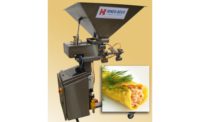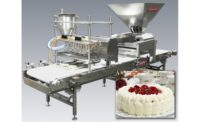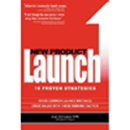Advertorial: Reiser
High-Speed Line Produces Variety of Breads and Rolls
With so many new products appearing in the bread aisle, today’s production lines need to make everything from white bread and hamburger buns to 100% whole wheat bread and whole grain rolls.
Moveover, with soaring commodity and energy prices, bakeries need to operate more efficiently. That means boosting capacity, minimizing changeovers, streamlining sanitation and reducing, if not eliminating, costly downtime.
At the International Baking Industry Exposition held last year in Orlando, Fla., Reiser branched out to target the major players in the bread aisle with production systems designed for makers of bread, buns, rolls, tortillas and virtually every other yeast-raised baked good.
Reiser’s high-speed Vemag Bun & Roll Divider, for instance, can produce everything from a batch of stiff bagel dough to soft English muffin dough.
Recently, Snack Food & Wholesale Bakery visited the Canton, Mass.-based company and later talked to Ron Mullins, corporate bakery accounts manager for Reiser. Here’s what new on the horizon.
Snack Food & Wholesale Bakery: From a technological perspective, how did Reiser get into the production of bread and rolls? Was there a specific technological advancement that made that possible?
Ron Mullins: Reiser has always been able to make very accurate portions at high rates of speed. The opportunity in bakeries focused us on doing this with yeast-raised products. Reiser has also recognized that there was a need for a new divider technology in the bakery market. As a matter of fact, a U.S.-based large bread/ bun/roll producer came to Reiser many years ago and requested to test a Vemag Divider in one of its plants and believed that the Vemag was “The” Divider for the future.
Large bread, bun and roll producers are looking for more versatility on their production lines. The market is changing. Their customers in supermarkets are looking for healthier products such as whole grain and wheat breads and rolls. Stiffer doughs needed to be processed; a more open crumb structure was desired on some variety breads and rolls. This required intense study of the product through the machine, and understanding how to handle the product. As a result, Reiser developed new configurations of our pumping element “the double screw,” which is unique for its positive displacement and, therefore, assures gentle handling of doughs. In addition, we reconfigured our double-screw feed system to handle the dough more gently and more consistently.
SF&WB: Let’s say I’m a baker who wants to produce a variety of products on one line. Can the Reiser system do that? What attachments are needed to produce, let’s say, bread varieties in the morning and buns in the afternoon?
Mullins: Reiser has always believed in a modular approach. Our ability to change the double-screw pumping elements in seconds gives us versatility to run everything from batters to stiff bread dough’s. The Vemag Divider can handle absorption rate from 45-95% plus.
We then have “roll in, roll out” attachments that can produce various products in different configurations. For instance, we can run bread dough in single or double lanes at 200-plus pieces a minute with our Reiser Dough Divider (RDD). The RDD can be rolled out, and we can quickly roll in our servo-driven bun divider. This Servo Divider consists of our patented waterwheel flow division system and our servo-driven cutting system. This system can fire eight lanes of product up to 300 times a minute with equal rates across the board. No tinkering with equalizing valves. Weight accuracy is guaranteed across multiple lanes without adjustments.
SF&WB: Reiser’s bread and bun line can make up to 300 cuts a minute (officially) and up to 600 cuts (unofficially). What type of products are we talking about here? Are the speeds different for whole grain and hearty stiff doughs and for softer doughs like hamburger buns?
Mullins: The Servo Divider can run the cuts no matter the dough. The Vemag itself is sized to have the power and speed for the product requirements.
SF&WB: What about tortillas, English muffins and other products?
Mullins: The Vemag has proven it can run a variety of absorption levels with a change of double screw. Reiser has installed many machines for English muffins and tortilla production with great benefits to the customer. On English muffin lines, the Vemag Divider increased line efficiencies, increased absorption, decreased yeast levels, improved quality or porosity. And, as always, scaling weights are excellent.
SF&WB: If I am producing products at such high volumes, will I need to make changes to my line as far as proofing, baking and packaging? Do you partner with other companies to provide turnkey solutions?
Mullins: Generally, we make out our units so that they can roll into anyone’s lines. Our specialty is accurate, fast dough division. That’s where our concentration is. That being said, we have the expertise to tie into any line both mechanically and electronically. Sometimes minor adjustments apply when changing technologies. Product quality will remain as good or better.
SF&WB: What if I’m a growing intermediate wholesale baker? Do you have smaller systems and how easy is it to upgrade?
Mullins: We have a range of machines and attachments. From the baker which needs only 60-100 cuts/minute, we have our Vemag 500 with a single lane cutoff. At the other end, we have the high-speed servo cutoff and HP 30 series systems. We also have a range of intermediate machines as well as attachments. If a customer requests to upgrade, Reiser has a program that allows our customer to trade in machines for a newer and larger model.
SF&WB: What type of breads and rolls are ideal for the Reiser bread and bun lines? Can they produce products with open cell structure or is it better for tighter textured breads and rolls?
Mullins: The change in double-screw configuration allows producing both open and tight crumb structure. The Vemag Dividers positive displacement double-screw system handles doughs gently However, true artisan breads, which include a long rest time between mixing and dividing, are not ideal for a Vemag Divider and should be processed on a stress-free line.
We also have our 982 developer system, which allows us to further degas dough’s in order to produce a more even or fine cell structure. This unit can be added to any system at anytime and taken out in minutes to run a more open crumb structure — part of our modular approach that preserves a customer’s investment as his needs grow or change and adds versatility to production lines.
SF&WB: Can you list other benefits such as changeover times, weight control, maintenance issues, sanitation issues and use of oil?
Mullins: Changeovers are designed to be fast and tool-less. In most cases it simply requires calling up a new program. The programming itself is easy and recipes can be protected. The machine is built like a tank. It is built to withstand years of abuse with minimal maintenance. A full rebuild of the pumping section takes seconds — old double screw and housing out, new set in. Double screw and housing sets last for years. The machine is built for full sanitation. It can be quickly opened up without tools in seconds. The full product path is exposed for sanitation and inspection. Maintenance is minimal and the machine tells you when it’s required. No divider oil is ever required to feed product, saving lots of slips and falls. SF&WB
Editor’s Note: For more information, visit www.Reiser.com .




